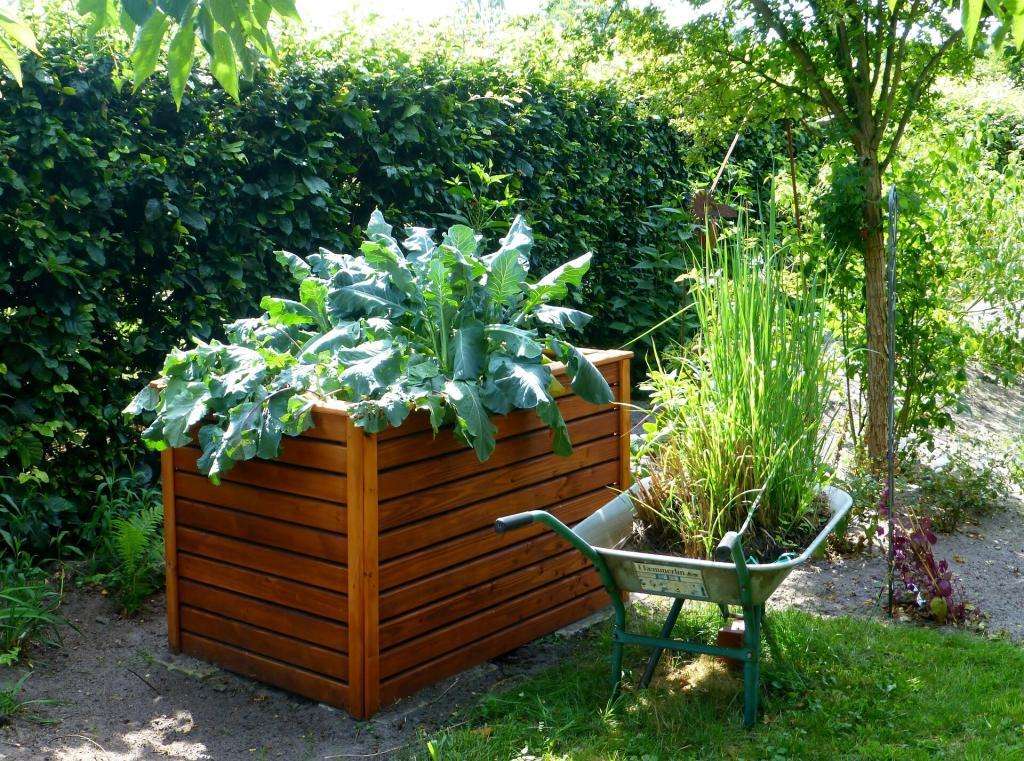In this article, we will be discussing how to maximize drainage in raised garden beds, with a focus on whether or not you should put holes in the bottom of your bed. Whether you’re interested in off-grid living or simply enjoy gardening, understanding the importance of proper drainage is crucial for the health of your plants. We’ll explore different methods and techniques to ensure that excess water drains effectively, preventing issues such as waterlogged soil and root rot. So, let’s dig into this topic and help you create the optimal environment for your plants to thrive!
Maximizing Drainage in Raised Garden Beds
Raised garden beds have become increasingly popular among gardeners and homeowners alike. They offer numerous benefits, including increased soil drainage, improved root growth, and enhanced weed control. In this article, we will explore the various ways you can maximize drainage in your raised garden beds to optimize plant health and yield.
Increase in Soil Drainage
One of the key advantages of raised garden beds is their ability to improve soil drainage. Proper drainage is crucial for plant health as it prevents waterlogged soil, which can lead to root rot and other issues. By utilizing raised beds, you can ensure that excess water drains away effectively, creating an ideal growing environment for your plants.
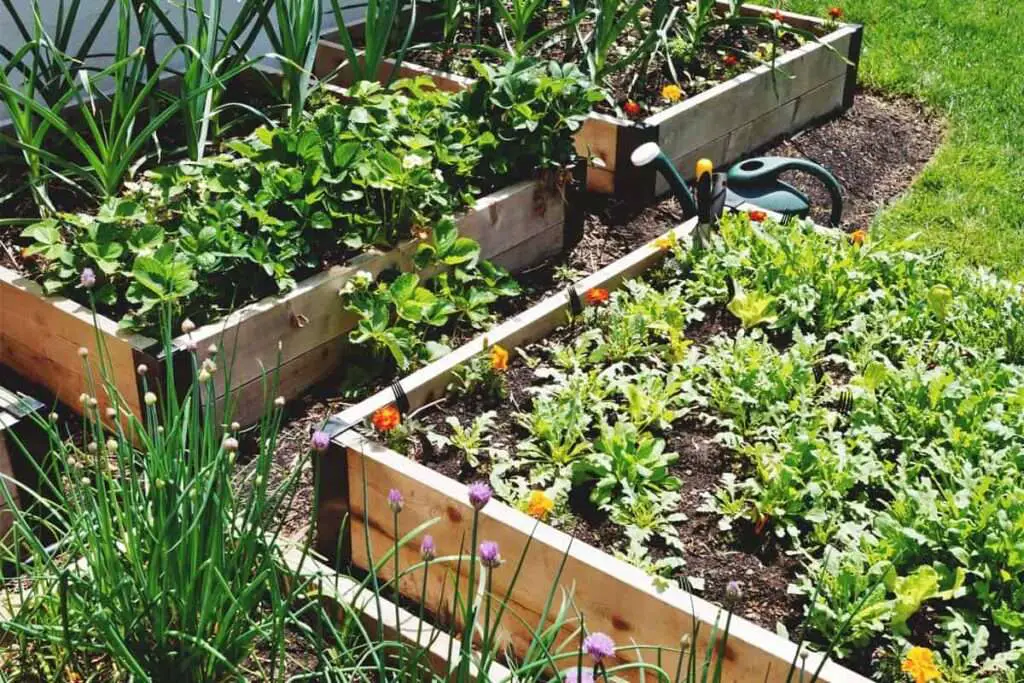
Improved Root Growth
In addition to enhancing drainage, raised garden beds also promote improved root growth. When plants are grown in raised beds, their roots have the freedom to penetrate deeper into the soil. This unrestricted growth stimulates root development, resulting in healthier and more productive plants.
Better Weed Control
Another benefit of raised garden beds is the improved control over weeds. Traditional garden beds are often plagued by invasive weed growth, which competes with plants for essential nutrients and water. Raised beds, on the other hand, provide a barrier for weed seeds, minimizing their intrusion and making weed control more manageable.
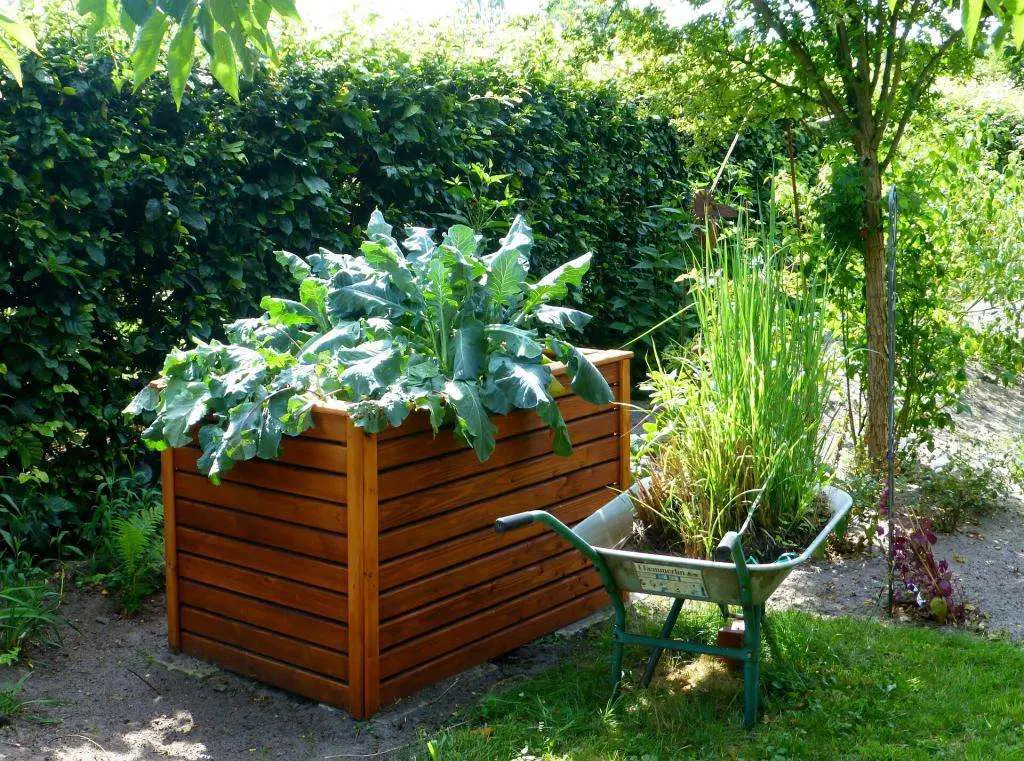
Understanding Drainage in Raised Garden Beds
To maximize drainage in your raised garden beds, it is important to understand the significance of proper drainage and the factors that can affect it.
Importance of Drainage
Proper drainage in raised garden beds is essential for several reasons. Firstly, it prevents water from pooling around plant roots, which can lead to root rot and the death of the plants. Secondly, adequate drainage ensures that soil nutrients remain accessible to plants, as excessive water can wash away essential minerals. Lastly, proper drainage helps in oxygenating the root zone, which is necessary for healthy plant growth.
Factors Affecting Drainage in Raised Beds
Several factors can affect the drainage in raised garden beds. The type of soil you use, the slope of the bed, and the surrounding landscape all play a role in determining how efficiently water drains from your beds.
Clay soils have poor drainage capabilities, as they retain water for longer periods. Sandy soils, on the other hand, drain water quickly and can lead to drying out of the soil. Therefore, it is important to find the ideal soil composition for your raised beds.
The slope of the bed can also impact drainage. If your raised bed is situated on a steep slope, water may rapidly flow downhill, causing erosion and poor water retention in the bed. Conversely, a completely level bed may lead to drainage issues as water may not flow out efficiently.
Choosing the Right Soil Mix
To optimize soil drainage in your raised garden beds, it is crucial to choose the right soil mix. The ideal soil composition for most plants is a well-draining loam that is rich in organic matter.
Finding the Ideal Soil Composition
A well-draining soil mix consists of sand, silt, and clay in the right proportions. Typically, a loam soil is composed of 40% sand, 40% silt, and 20% clay. This balanced mix allows for adequate water drainage while retaining enough moisture for plant roots.
Adding Organic Matter for Drainage
In addition to finding the right soil composition, it is beneficial to add organic matter to your soil mix. Organic matter, such as compost or well-rotted manure, improves soil structure and enhances drainage. It also increases the soil’s ability to retain moisture, reducing the risk of water runoff.
Mixing in organic matter with your soil will not only maximize drainage but also provide valuable nutrients to your plants. Aim to add around 3-4 inches of organic matter to your raised garden beds and mix it thoroughly into the existing soil.
Designing Proper Bed Depth and Width
The depth and width of your raised garden beds can significantly impact drainage. It is important to determine the ideal bed depth and width for optimal water flow.
Determining the Ideal Bed Depth
The depth of your raised garden beds depends on the type of plants you intend to grow. Generally, a depth of 6 to 12 inches is suitable for most vegetables and flowers. For root vegetables or plants with deeper root systems, a depth of 12 to 18 inches may be necessary.
Deeper beds allow for better drainage, as excess water has more space to flow away from the plant roots. However, it is essential to ensure that the bed is not too deep, as this can lead to waterlogging and inadequate oxygenation.
Optimal Bed Width for Drainage
The width of your raised garden beds also plays a role in maximizing drainage. Beds that are too wide may have difficulty draining water from the center, leading to waterlogged soil. On the other hand, beds that are too narrow may dry out quickly and require more frequent watering.
A width of 3 to 4 feet is generally recommended for raised garden beds. This width allows for easy access to plants from both sides while maintaining efficient drainage.
Positioning and Site Preparation
Proper positioning and site preparation are crucial steps in maximizing drainage in your raised garden beds.
Selecting an Appropriate Location
When choosing a location for your raised garden beds, consider factors such as sunlight exposure, accessibility, and drainage. Opt for a spot that receives at least six to eight hours of direct sunlight per day, as most plants require ample sunlight for optimal growth.
Ensure that the location is easily accessible for regular maintenance and watering. It is also important to assess the natural slope of the land to prevent water accumulation around your beds. If possible, choose a slightly elevated area to encourage water drainage.
Prepping the Site for Improved Drainage
Before installing your raised garden beds, it is essential to prepare the site for improved drainage. Start by removing any existing vegetation, weeds, or rocks from the area. This will prevent interference with the bed’s drainage system.
Next, level the site by removing excess soil or adding additional soil as needed. The goal is to create a flat or slightly sloping surface that encourages water to flow away from the beds.
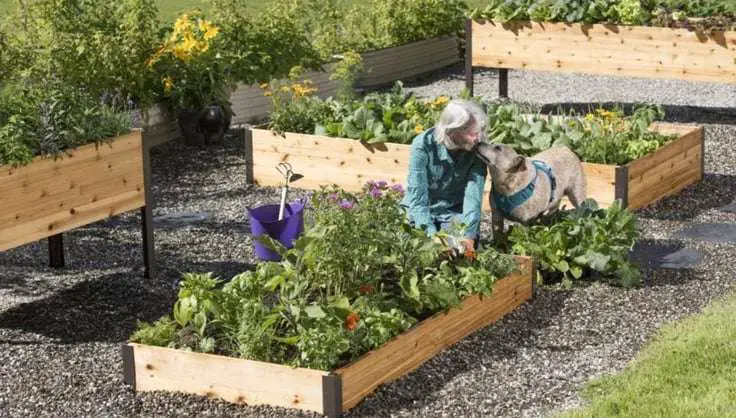
Installing Drainage Material
To further enhance drainage, consider installing additional drainage material in your raised garden beds.
Benefits of Adding Drainage Material
Adding drainage material, such as gravel or coarse sand, at the bottom of your raised beds can help excess water flow away more efficiently. This material prevents the soil from becoming oversaturated and promotes healthy root development.
Types of Drainage Material to Consider
There are several types of drainage material you can use in your raised garden beds. Gravel or crushed rock is a popular choice as it provides excellent drainage capabilities. Another option is coarse sand, which can be mixed with the soil to improve water flow.
It is important to note that the drainage material should only be added to the bottom third of the bed to avoid excessive drying out of the soil.
Importance of Raised Garden Bed Edging
Proper edging is crucial for maintaining proper soil drainage in raised garden beds. Edging serves as a barrier, keeping the soil contained while allowing excess water to drain away effectively.
Maintaining Proper Soil Drainage with Edging
Edging prevents soil erosion, which can compromise drainage. It also helps to keep the soil in place during heavy rainfall or watering, minimizing the risk of waterlogging.
Different Edging Options for Drainage
There are various options for edging your raised garden beds. Popular choices include wooden boards, stone or brick, and metal edging. Opt for materials that are durable, weather-resistant, and offer aesthetic appeal.
When installing the edging, make sure it is secured firmly in the ground to prevent soil erosion and maintain proper drainage.
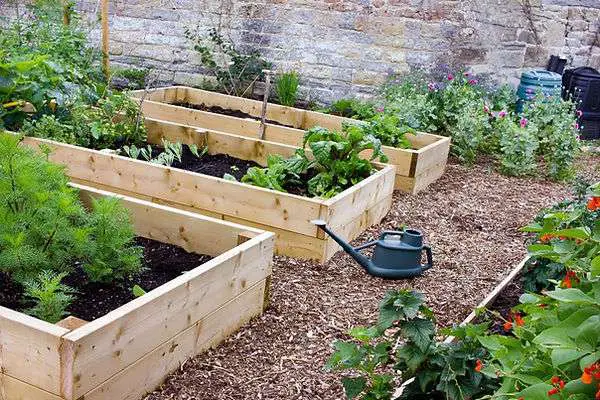
Providing Adequate Watering Practices
Watering practices in raised garden beds play a crucial role in maintaining optimal drainage. Proper watering techniques ensure that plants receive adequate moisture without oversaturating the soil.
Watering Techniques for Optimal Drainage
To maximize drainage, it is important to water your raised garden beds deeply and infrequently. This encourages plant roots to grow deeper in search of moisture, promoting healthier root systems.
Watering in the early morning or late evening is recommended to minimize water loss through evaporation. Use a soaker hose or drip irrigation system to deliver water directly to the plant roots, reducing water wastage.
Signs of Overwatering or Poor Drainage
Overwatering or poor drainage can lead to several issues in your raised garden beds. Some common signs include yellowing or wilting leaves, slow growth, fungus or mold growth on the soil surface, and a foul smell. If you notice any of these signs, adjust your watering practices or address the drainage issue promptly.
Utilizing Proper Plant Spacing
The spacing between plants in your raised garden beds can impact drainage. Proper plant spacing allows for adequate airflow and prevents overcrowding, which can lead to poor drainage and increased susceptibility to diseases.
The Relationship Between Plant Spacing and Drainage
When plants are spaced too closely, their leaves and stems can become congested, restricting airflow and increasing the chances of waterlogging. Adequate spacing allows for better circulation of air, reducing the risk of excess moisture and maintaining proper drainage.
Benefits of Adequate Plant Spacing
Proper plant spacing not only maximizes drainage but also promotes healthier plants. Ample spacing provides plants with sufficient access to sunlight, nutrients, and water. It reduces competition for resources and allows each plant to grow to its full potential.
Managing Mulching and Weed Control
Mulching and weed control are essential aspects of maintaining proper drainage in your raised garden beds. These practices help retain moisture while preventing weed growth that can impede drainage.
Mulching Strategies for Drainage Enhancement
Mulching your raised garden beds offers numerous benefits, including moisture retention and weed suppression. However, it is important to choose the right type of mulch and apply it correctly to maximize drainage.
Organic mulches such as straw or wood chips are excellent choices for improving drainage. Apply a layer of mulch around your plants, ensuring it does not come into direct contact with the stems. Mulching helps retain moisture in the soil while allowing excess water to drain away effectively.
Weed Control Methods Without Sacrificing Drainage
Weeds can quickly take over raised garden beds and hinder drainage. Manual removal, such as pulling or hoeing weeds, is an effective and non-toxic method of weed control. Regularly inspect your raised beds for the presence of weeds and promptly remove them to prevent competition for resources.
Avoid using herbicides or chemical weed killers, as they can also harm beneficial soil organisms and disrupt the natural drainage process.
Addressing Common Drainage Issues
Despite your best efforts, drainage issues may still arise in your raised garden beds. It is essential to identify and troubleshoot these problems to restore optimal drainage.
Identifying and Troubleshooting Drainage Problems
Common drainage issues in raised garden beds include water pooling on the surface, slow water absorption, or excessive water runoff. If you notice any of these issues, first inspect the slope and location of your beds to ensure water is flowing away properly. Check for any blockages in the drainage system, such as clogged drainage holes or compacted soil.
If the problem persists, you may need to adjust the soil composition by adding organic matter or install additional drainage material. Regular monitoring and quick action can help address and resolve drainage problems effectively.
Solutions for Waterlogged Beds
If your raised garden beds are consistently waterlogged, you may consider installing drainage pipes or tiles beneath the soil. These underground drainage systems can help divert excess water away from your beds, enhancing overall drainage.
Another solution is to elevate the beds slightly by adding more soil or using risers. This can improve water flow and prevent water accumulation in the beds.
Potential Alternatives for Improved Drainage
While raised garden beds are a popular choice for maximizing drainage, there are alternative garden bed designs that offer superior drainage capabilities.
Considering Alternative Garden Bed Designs
Garden bed designs such as keyhole gardens, wicking beds, or self-watering containers are worth considering if you are facing persistent drainage issues. These designs often incorporate specialized water reservoirs or wicking systems, ensuring plants receive adequate moisture while preventing waterlogging.
Exploring Other Drainage Solutions
In addition to alternative garden bed designs, there are other drainage solutions you can explore. For example, French drains or swales can be implemented to divert excess water away from your garden beds. These methods involve creating trenches or ditches that direct water to a desired location, effectively managing drainage.
Consulting a professional landscaper or drainage specialist can provide valuable insights and guidance on implementing alternative drainage solutions.
Conducting Regular Maintenance and Inspection
To ensure long-term drainage efficiency in your raised garden beds, it is essential to conduct regular maintenance and inspection.
Monitoring Drainage Performance
Regularly monitor the performance of your garden beds’ drainage system. Observe how quickly water drains after watering or rainfall. If you notice any changes in water absorption or drainage patterns, address the issue promptly to prevent further complications.
Maintaining the Bed for Long-Term Drainage Efficiency
Maintaining the cleanliness and integrity of your raised garden beds is crucial for long-term drainage efficiency. Remove fallen leaves, debris, or weeds from the surface regularly to prevent blockages and water pooling. Replace or repair damaged edging or drainage material as needed.
Additionally, periodically check the soil composition and adjust it as necessary to maintain optimal drainage.
Conclusion
Maximizing drainage in raised garden beds is crucial for ensuring the success and health of your plants. By implementing proper soil composition, adequate bed depth and width, installing drainage material, and employing appropriate watering and mulching techniques, you can create an optimal environment that maximizes drainage and supports thriving plant growth.
Regular maintenance and inspection, along with prompt troubleshooting of drainage issues, will help maintain the efficiency of your raised garden beds’ drainage system in the long run. With proper care and attention to drainage, you can enjoy bountiful harvests and a thriving garden in your raised beds for years to come.

